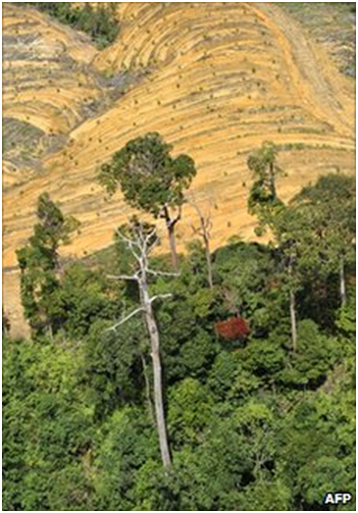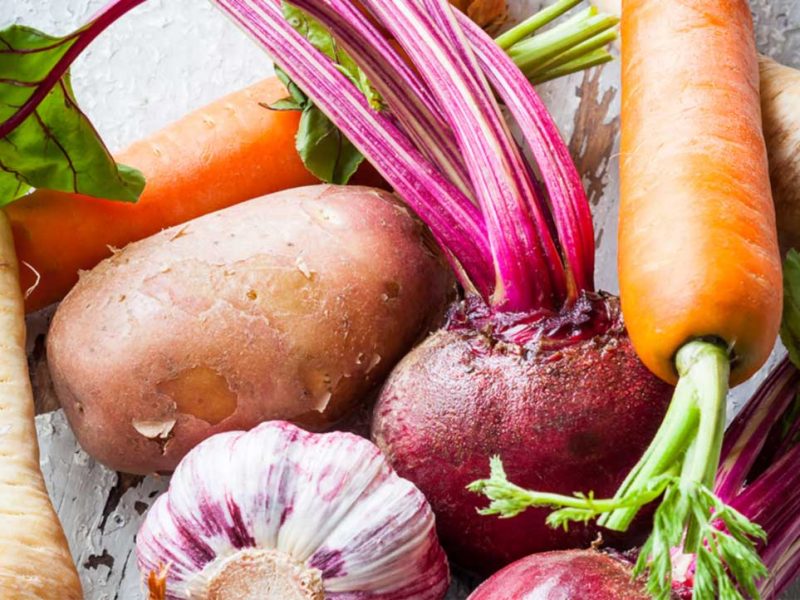Constructive Controversy: Marketing of Agricultural Commodity in Sierra Leone
A critical analysis of Dr. Will’s Comments
Dr. Harry Will, a renowned agriculturist and one time Minister of Agriculture, in his recent comments on the establishment of the Sierra Leone Produce Marketing Company (SLPMC) has succeeded in provoking a debate regarding the present marketing system of SLPMC for cash and food crops. Dr. Will said, the current marketing arrangement of SLPMC is not in the best interest of the small scale producer and for that matter, the nation of Sierra Leone. Dr Will was quick to point out that Government Policy for free market is being abused by unpatriotic Sierra Leoneans and unscrupulous foreigners – exploiting the local producers and depriving the country of the foreign exchange that is generated in developing the country but in particular to alleviate the poverty among the farm workers and other low income persons. He cited that in 2011, trade figures show that about 198,000MT of cocoa and coffee were exported by Sierra Leone, yielding about US$400 million. This enormous amount, he went on, could have been available to boost national and agricultural development in particular, if the SLPMC as the national marketing company was the sole exporter, as it use to be in the days of the defunct SLPMB, of these and other agricultural commodities like in some other countries.
Dilating on the functions of the new company, Dr. Will reiterated that the SLPMC as a National Institution should protect the overall interest of the nation as a whole and should maintain the respectability and the integrity of the country through fair international trade. He also emphasised that SLPMC should offer enormous job opportunities to nationals and contribute to the required national economic stability.
He reminded readers that cash crop development projects such as the STABEX and A4D were all out of tax payer’s money or international grants/loan which the government has to repay – thus the country and its farmers should be primary direct beneficiaries. He said, the competitiveness of Sierra Leone against the domination of foreign companies in the produce market should be reflected in the structure and operation of the new SLPMC and that the quality control of commodities can be enhanced like in the past, international trade boosted and Sierra Leone’s reputation in cash crop trade will remain untarnished.
Dr Will recommended that the main structure of the SLPMC should be in its freedom and ability to be sole exporters of agricultural commodities and through such means to repatriate the foreign exchange which is so badly required by the government to boost national development. He further suggested that a team of specialists should be assigned with the task of reviewing the Act or Articles that led to the creation of the SLPMC with the aim of streaming its roles as an effective national institution, and should seek Parliament, Government, International, the Business community and the opinion of farmers and general public to an effective SLPMC programme for the country.
For us to get a better understanding on the implications of liberalization on quality of produce market, particularly cocoa, and fair prices to the farmers, it is important that we take a review of experience of other cocoa producing countries in West Africa which have liberalized their cocoa sectors long before Sierra Leone. An overview of opportunities and challenges regarding liberalization in these particular cases are presented for Cameroon, Ivory Coast, Nigeria and Ghana, all of whom are the leading countries in the export of cocoa in West Africa and the world at large.
Prior to liberalization in Cameroon, quality controls in the commodity market were enforced by the State both up-country and at the port. Following liberalization, up-country checks were stopped and the state owned agency (ONCC) retained responsibility for quality control at the port (and certification). In 1997/98, the ONCC’s responsibility for quality control was removed and three private sector firms were given the responsibility of issuing quality certificates prior to export. It is for the exporters and international buyers to decide which company to use for quality control.
Following liberalization, the number of licensed exporters increased from around 60 to over 300. The internal market initially became chaotic and speculative: inexperienced operators entered the market with modest amounts of capital and for limited periods bought any grades of products offered to them. Both exporters and internal buyers lost money only to be replaced by other inexperienced buyers, with the result that export contract default levels were high. The increased competition and lower taxation resulted in an increase in grower prices as a proportion of the export price.
At first, quality deteriorated at both the farm and export levels. The increased competition has meant that farmers have effectively had a guaranteed buyer for their crop whatever the quality, and so attention to quality has fallen.
In Ivory Coast, the world’s largest exporter of cocoa, liberalization of the external marketing of the cocoa sector occurred in October 1999. Prior to liberalization, physical exports were handled by the private sector, while the state owned Agency Caisse de Stabilisation (Caistab) arranged export contracts and issued export permits to the private sector. Without an export permit, an exporter was not permitted to export. The Caistab also made its own direct sales whereby it arranged export contracts and then instructed private exporters to ship on its behalf. The Caistab was responsible for quality control and made checks both up-country and at the port.
In 1999 the cocoa sector was fully liberalised, with only an indicative producer price and export price being issued by the New Caisbab. In June 1999, quality control was liberalised and is now the responsibility of two private companies, SGS and Cornelder (who have since merged).
In the early stages of liberalization, the low international price at the time placed severe strain on farmers who were receiving farm gate prices which were more than 50 per cent lower than the period before liberalization. Farmers actively protested against the system and low prices and threatened to burn cocoa. This caused delays in the export of the crop. Farmers demanded for Government intervention, although intervention in producer pricing was not within the mandate of the New Caistab. Nevertheless, serious efforts were made to create a scheme, involving the forward selling of sizeable quantities of cocoa, to re-establish a system of stabilised indicative producer prices.
The new Caistab is currently renovating and building new warehouses up-country. This new infrastructure is to allow for the establishment of a physical commodities exchange and, given that the stocks would have to be graded and certified, there should be no barrier to the development of a warehouse warrant scheme.
The Ivorian case study highlights the issues of concern already raised by Ghana with regard to the strains which liberalization can place on a sector which has previously relied on a stable system of pricing and marketing.
Regarding export licensing criteria, the Ivoirian approach is typical in requiring that a company be registered locally and show evidence of financial viability. It has been criticised that the criterion of presenting a bond guarantee of FCFA 200 million (almost US$400,000) has forced many of the smaller companies out of business and has in fact encouraged the development of the larger groups which are often in partnership with overseas companies. The criteria do not require that a company be an established exporter, i.e., proving a certain level of trading volumes in previous years. Furthermore the criteria do not include any proof of access to storage facilities.
As for Nigeria, until liberalization, the Nigerian Cocoa Board (NCB) had very similar responsibilities to the Ghana Cocoa Board (Cocobod). It set the producer price, controlled quality at farm level, provided extension, controlled the internal buying through agents and was the monopoly buyer and exporter of cocoa, In 1986 the Government of Nigeria, as part of a general move towards liberalizing pricing systems and the marketing of commodities, disbanded the NCB and completely deregulated the internal and external marketing of cocoa. The licensing of internal buyers and exporters was abolished and quality control procedures abandoned.
These changes took place almost overnight, just as in the case of Sierra Leone, with no effective alternatives put in their place. One of the objectives of liberalization was to make farmers more responsive to world prices which, given their previously low incomes, was expected to result in a rise in earnings and an increase in output. It was assumed that a rise in exports would enable the Government of Nigeria to earn more foreign exchange through taxes and would give a badly needed boost to the economy.
Liberalization initially boosted production and exports but the quality of cocoa delivered to end users plummeted and became notoriously unreliable. Large numbers of new traders entered the sector, and these traders, most of whom had little knowledge of cocoa, competed with processors to obtain cocoa directly from the farmers. Cocoa was purchased at high prices with little regard to quality, and much was exported before it was fully fermented and dried.
As the quality of Nigerian cocoa declined, so did the premium that Nigerian cocoa fetched on the export market. The problem originated at both the farm level and the port level. At the producer level, farmers, confronted with numerous new traders offering considerably higher sums for their cocoa, realised that most of these operators had no concept of what they were buying, and consequently often sold them anything, even most unfermented beans, simply because many fly-by-night exporters wanted to take delivery as quickly as possible. Many exporters mixed the higher quality cocoa with the poorer grades and shipped the resulting uneven blend. Clearly, there was no effective quality control.
Liberalization led to the removal of restrictions on who could engage in cocoa trading or exporting in Nigeria. Currently, the only requirement is that in order to export commodities, a company must register with the Nigeria Export Promotion Council, similar to the Sierra Leone Investment and Export Promotion Agency (SLIEPA) in order to obtain an export licence. In practice, anyone with the capital to undertake such a business can obtain this licence. Forward selling of the crop ended with liberalization and cocoa was sold on a spot basis. This situation continues today, with many sales only concluded once the shipment has been inspected in a Western European or North American port warehouse.
In Ghana, Cocoa is the backbone of the economy and a major foreign exchange earner. It is the most important agricultural export crop accounting between 25 – 30 percent ($1.2 billion in 2007) and contribute about 10% GDP. The industry employs over six million people.
Before the 90s the cocoa sector in Ghana was completely controlled by the state and both the internal and external marketing was the responsibility of the Ghana Cocobod. In the early 90s, the World Bank and the Ghanian government discussed the possibility of privatizing the domestic purchasing of Cocoa. This was about the same time that the Sierra Leone Government was also approached by the World Bank to do similar. The Cocobod subsequently approved the implementation of the plan and approved the license of four private companies to buy from the farmers at approved government prices for a commission and passed on to the cocobod for export; as system that was described as partial liberalization.
Partial liberalization is used in the sense to mean that the Ghanaian market is not fully liberalized. In this arrangement, buying agents are limited by government regulations regarding produce price, buyers and transportation margins and the export of cocoa. Margins of all participants are fixed per ton or bags of cocoa delivered and taken over by cocoa.
The resulting reforms have led to increase in the producer price of cocoa from 56 percent to 70 percent of the fob (free on board) price over between 1998 to 2005. The fob price is the price which government sells cocoa to foreign buyers and includes, apart from a profit margin, all cost incurred in buying and transporting the beans to the port.
Many schools of thought have argued that partial liberalization which Ghana introduced in the 90s have helped maintained high quality of export produce and fair prices to the farmers.
In Sierra Leone, the SLPMB was set up 1949 with bespoke “monopsonistic” powers to purchase, export and market specified national produce as determined by the Board from time to time. In turn, the Board was to assist the development of the agricultural sector for the benefit of both the farmers and government, whilst serving as ready market for agricultural produce. It was also a foreign exchange earner for government, and provides a mechanism for stabilizing farmer’s income. And during the periods that the company enjoyed the protection of the state as a sole monophony charged with the responsibility to market Sierra Leone produce, the SLPMB was highly regarded as a robust company that was both efficient and effective in the discharge of its duties.
In the early 90s, however, the government of Sierra Leone was forced by donor bodies to liberalize the agricultural commodity market as a precondition to access donor loans and grants. Unlike Ghana which only liberalizes the internal marketing, Sierra Leone completely liberalized both the internal and external marketing of cash crop. Consequently, the regulatory functions for ensuring quality and paying fair prices to the farmers was also taken away from SLPMC making it free for all. The board lost its monopoly and was subjected to both internal and external competition until its demise in June 1992.
The aftermath of liberation and the consequences of the civil too resulted in the cocoa exported from Sierra Leone suffering from a drastic quality and decrease in export volume to as low as 6,000 mT, with a production capacity of 70,000 hectares under cultivation, and an average yield of 200kg / hectare. Due to poor quality, Sierra Leonean Cocoa is sold on the world market as Cocoa butter raw material. This results in a price discount of approximately 25% over Cocoa used for chocolate production.
Prior to liberalization, the country was able to record the highest export volumes of cocoa amounting to 26,000 mT exported in 1980, with a production capacity of 75,000 hectares under cultivation, with and an average yield of 400kg/ hectare. Sierra Leonean cocoa achieved a 10% premium over world market prices during this period.
The initial focus of trade liberalization in Sierra Leone was to stimulate and promote private sector participation, raise the flexibility and responsiveness of the market distribution systems, reduce unit costs of operation in local markets, encourage the commercialization of the subsistence sub-sector, and ultimately raise household incomes. The trading of cocoa and coffee is dominated by a handful of key traders who pay a flat price for cocoa regardless of quality and provide credit to farmers prior to harvest as a means of locking in supply. This system does not encourage farmers to improve quality and they are locked into a debt cycle, which reinforces lower price. As a result of this structure, buyers’ margins are high enough for them not to focus on quality as they can focus on generating volume and use surplus working capital to guarantee supply.
In conclusion, international experience has shown that liberalization has often led to a situation where the increased competition among buyers has meant that farmers have effectively had a guaranteed buyer for their crop, whatever the quality. In addition, in those cases where buyers advance seasonal credit to farmers in return for a commitment to receive the crop after the harvest, it becomes very difficult for a trader to refuse whatever is offered by the grower. Thus, farmers frequently pay less attention to quality than they did under a tightly regulated system, where the penalties for poor quality production may be severe.
It is believed that competition may be weak at the farm gate level to the disadvantage of the farmers, as we are experiencing in Sierra Leone. This is especially when imperfect market economics prevail. Farmers in remote areas that are constrained of good market information will be exploited. It is further believed that the inability of farmers’ to measure product quality at farm gate also contribute to exploitation.
In Sierra Leone, the increase number of buying agents activities and the unrestricted external marketing of cocoa has resulted in farmers choosing from among buying agents based on those that provide cash for credit. Many farmers often cash strapped and constrained in attempts to invest in their productive venture are likely to be the poorest.
Dr Will’s aeration regarding the present marketing system of SLPMC for cash and food crops, claiming the current marketing arrangement of SLPMC is not in the best interest of the small scale producer and for that matter, the nation of Sierra Leone may not be far from being correct. His call on government to review the instrument that led to the creation of the SLPMC with the aim of streaming its roles as an effective national institution will serve as an opportunity to for us to compare our current cash crop marketing system to that of Ghana which has had success stores over the years.
Author: Mr. Henry Yamba Kamara (Managing Director SLPMC)
Stay with Sierra Express Media, for your trusted place in news!
© 2013, https:. All rights reserved.







Matthew Linked In
/
Constructive Controversy: Marketing of Agricultural Commodity in Sierra Leone http://t.co/fmp8tBkgmH
27th March 2013